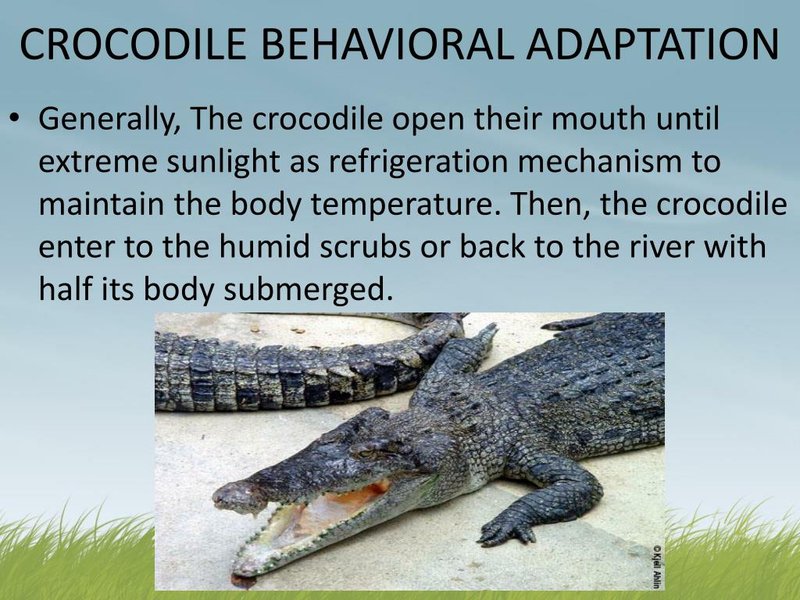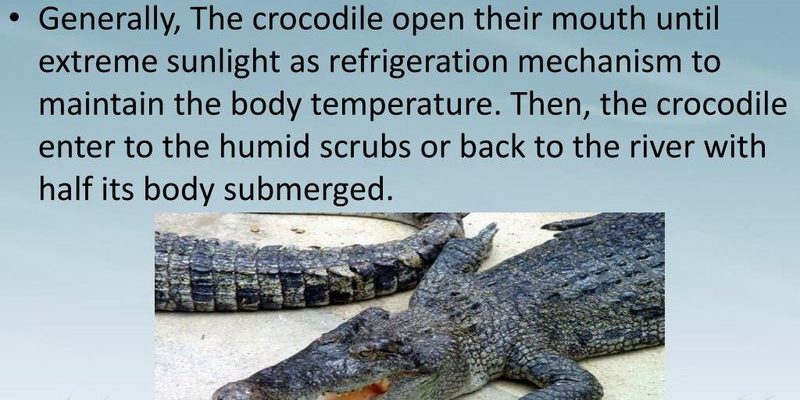
Crocodiles are fascinating not just because they look cool (and maybe a little scary), but because they’re packed with *incredible adaptations* that help them thrive in diverse habitats. From their powerful jaws to their unique hunting techniques, each feature plays a critical role in their survival. So, why do we care? Understanding these adaptations helps us appreciate not just crocodiles, but the delicate balance of ecosystems where they play a vital role.
Let’s dive deeper into the adaptations that make the crocodile a true survivor, exploring how these remarkable creatures have adapted to conquer their world.
1. Powerful Jaws: Nature’s Ultimate Tool
One of the first things you notice about a crocodile is its *massive jaws*. Seriously, these things can crush bones like they’re made of crackers. A crocodile’s bite is one of the strongest in the animal kingdom, with some species capable of exerting over 3,000 pounds of pressure per square inch. That’s like having a mini wrecking ball at the end of its snout!
But it’s not just about brute strength. Here’s the thing: their jaws are also perfectly designed for grabbing and holding onto slippery prey, like fish. When a crocodile snaps its mouth shut, the upper jaw is fixed while the lower jaw hinges — this means it can grip tightly but also lets it open its mouth wide when it needs to breathe or take in water while swimming. This unique design makes it a fisherman’s nightmare and a survivor’s dream.
2. Camouflage: The Art of Stealth
Have you ever watched a crocodile lying still on the bank of a river? If you’re not paying attention, it can blend right in with the environment. This is called *camouflage*, and it’s one of the clever ways crocodiles survive in the wild. Their skin has a rough, scaly texture that mimics the colors and patterns of mud, rocks, and even water.
Let me explain how this works: by remaining still and hiding in plain sight, crocodiles can ambush unsuspecting prey that comes too close. Picture this: a tasty bird or small mammal wandering by, completely unaware of the stealthy predator watching from the shadows. When the time is right, the crocodile can strike with lightning speed. It’s all about that perfect blend of patience and stealth.
3. Efficient Breathing: Staying Underwater
Crocodiles are masters of the water, but did you know they can hold their breath for up to two hours? That’s right! They’ve got some serious diving skills. Their lungs are specially adapted to extract oxygen from the air efficiently, allowing them to stay submerged for long periods. This is incredibly useful when stalking prey or hiding from threats.
Here’s the kicker: while underwater, crocodiles can close the valves in their nostrils to keep water out. They also have a special membrane that covers their eyes, so they can see without letting their eyes dry out. This means they can literally be right under the water, scanning for food, while still being protected. Talk about a well-designed system!
4. Temperamental Temperatures: The Cold-Blooded Strategy
You might have heard the term *cold-blooded* before, but have you ever thought about what it means for crocodiles? They’re ectothermic, which means they rely on external heat sources to regulate their body temperature. This is actually a huge advantage in the wild.
Since they don’t need as much food as warm-blooded animals, crocodiles can survive long periods without eating—sometimes weeks or even months. This lets them conserve energy, especially during tough times when food is scarce. Plus, they can bask in the sun to warm up or slide into the water when they need to cool off. It’s like having a personal thermostat that helps them adapt seamlessly to different environments.
5. Social Behavior: Communication is Key
While many people might think of crocodiles as solitary creatures, they actually have a fascinating social side. They communicate using a range of vocalizations, from growls to bellows, especially during mating season. It’s like they’ve got their own secret language!
But why does this matter for their survival? By forming social bonds, crocodiles can work together when it comes to protecting their nests and young. Crocodile mothers are known to carry their babies gently in their mouths to the water after hatching. This nurturing behavior not only improves their offspring’s chances of survival but also strengthens the population. It’s all about teamwork in the wild!
6. Strong Immunity: Nature’s Defense
Crocodiles are surprisingly resilient creatures. They can thrive in environments that would make most animals sick. This is largely due to their *strong immune systems*. They have powerful antibacterial properties in their blood, which helps them heal quickly from injuries and resist infections.
Consider this: if a crocodile gets injured while hunting or fighting, it doesn’t just sit around sulking. Instead, it can often heal quickly and get back to business. This durability contributes to their long lifespan, with some living over 70 years! Their ability to adapt to wounds and recover quickly is a major factor in their ongoing success as a species.
7. Versatile Diet: Omnivorous Eaters
Crocodiles are opportunistic eaters, which means their diet isn’t picky. They’ll feast on fish, birds, small mammals, and even larger prey like deer or buffalo when the chance arises. This *versatile diet* allows them to thrive in various environments where food sources might fluctuate.
Here’s the thing: being adaptable in diet means they can survive in both abundant and scarce environments. While some animals might struggle when their favorite food becomes hard to find, crocodiles can switch up their menu without missing a beat. This flexibility is a key element of their survival strategy.
8. Reproduction and Parental Care: Ensuring Future Generations
Finally, let’s talk about how crocodiles make sure their species continues to thrive. Their reproductive strategy is quite fascinating. Female crocodiles build nests on land, laying anywhere from 20 to 80 eggs, depending on the species. These nests are often built near water, ensuring the eggs are safe and close to where the hatchlings will need to go.
Crocodile mothers are remarkably protective, keeping a watchful eye on their nests. After the eggs hatch, she will help the tiny hatchlings get to the water. It’s a heartwarming sight to see a mother croc carefully carrying her young in her mouth, showing that even the fiercest predator can have a soft side when it comes to family. This caring behavior increases the chances of survival for the next generation, ensuring that these amazing creatures continue to thrive.
In conclusion, the adaptations that make the crocodile a survivor are truly remarkable. From their powerful jaws and camouflage to their efficient breathing and strong immunity, these creatures have evolved to thrive in some of the toughest environments on Earth. By understanding these adaptations, we not only gain insight into the life of crocodiles but also learn more about the delicate balance of ecosystems where they play a key role. So, next time you see a crocodile, appreciate it for the incredible survivor it is.

